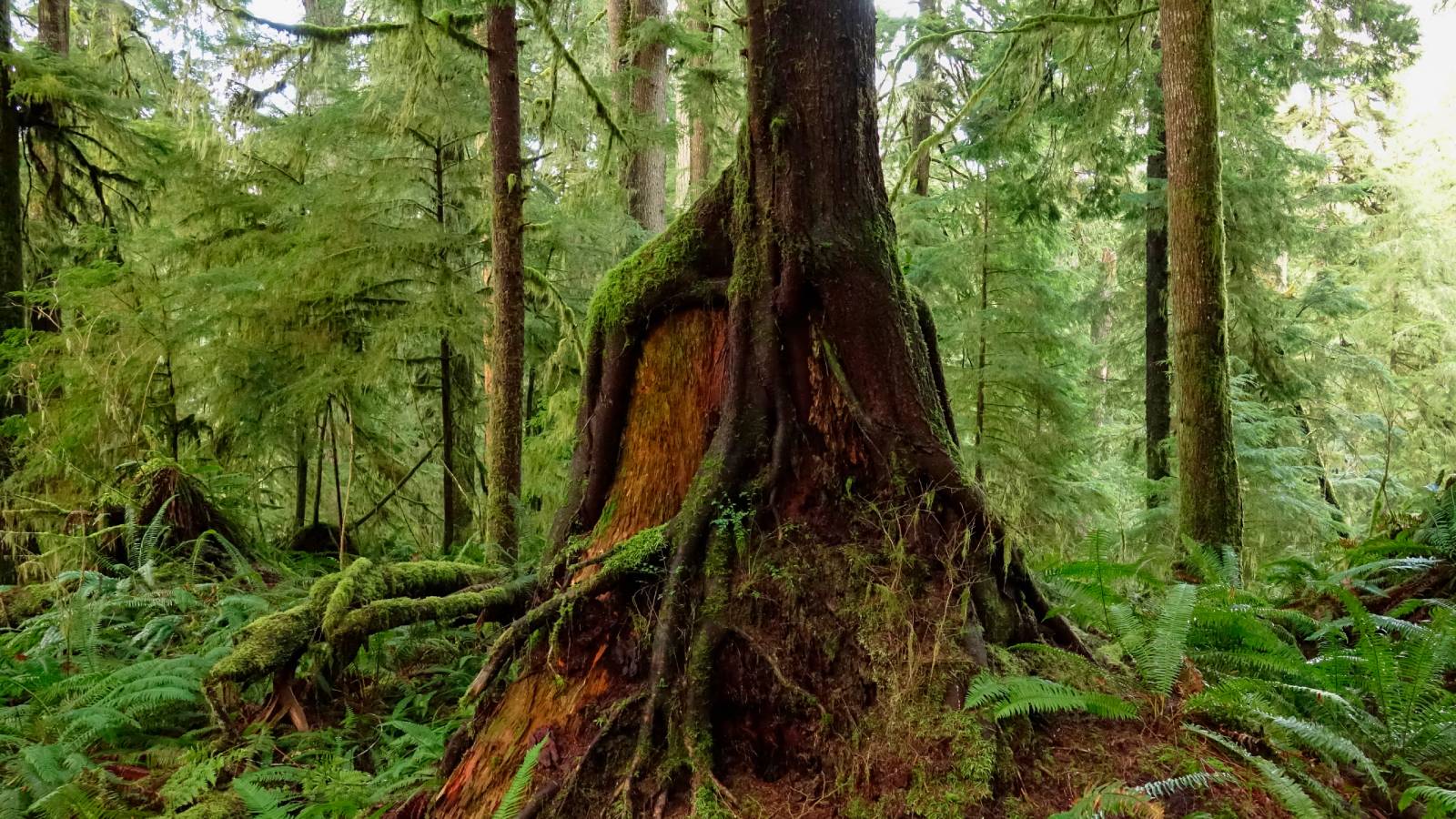Nurse Logs: Helping New Trees Take Root And Regenerating Our Forests
Nurse logs provide nutrients and infrastructure for new trees. Learn how these old logs and stumps help sustain our forests.

If you’ve ever hiked through the woods and seen a fallen decaying tree or the stump of a downed tree through or around which new trees are growing, you are viewing a nurse log or stump. Nurse logs are a fascinating and integral part of forest regeneration. Without them, the forest as we know it would likely cease to exist. Nurse logs are also vital to wildlife conservation and forest management.
What is a Nurse Log?
Most often found in temperate coastal rainforests, a nurse log or stump is a dead, decaying part of a once-living tree, be it a snag tree, log, or limb. It may also be a larger, faster-growing tree that shelters a smaller, less mature tree or plant. Saplings, ferns, and other plants that grow on a nurse log take nutrients from the dead tree, feeding on it as it breaks down but long before it turns to soil.
Nurse logs also protect young trees from soil fungi that can kill seedlings.
Dead tree stumps and limbs may look like forest junk to some but a closer look reveals how a nurse log nurtures and nourishes other trees as well as wildlife. Many animals rely on dead wood at some stage of their life cycle.
Benefits of Nurse Logs and Stumps
Nurse logs provide a multitude of benefits to the forest. Their damp, rotting wood supplies moisture to rooted seedlings. Seedlings also have the benefit of height when grown on a nurse log or stump which raises the young trees up above the forest floor, giving them better access to sunlight.
While nurse logs protect young trees from soil fungi, they also foster a relationship with mycorrhizae, a fungus that grows with the roots of seedlings in a symbiotic manner. In addition, the wood of a nurse log repels many pathogens harmful to young trees.
Interestingly, saplings growing on nurse logs or stumps are often less likely to become a food source for browsing ruminants like deer or elk.
Gardening tips, videos, info and more delivered right to your inbox!
Sign up for the Gardening Know How newsletter today and receive a free copy of our e-book "How to Grow Delicious Tomatoes".
In managed forests, such deadwood is often removed to reduce the risk of fire but by doing so another risk is exposed. The removal of these vital nurse logs results in a less dense forest and it is also less diverse.
Nurse Logs in the Home Garden
If you cut down a tree in your yard, consider leaving the stump or a portion of the tree in your yard. Letting nature do its job is part of sustainable gardening. Leaving a piece of the old tree to decompose in your yard can help regenerate your soil and also may lead to a new sapling taking its place. The old stump will protect the young plant and provide nutrients, giving it a better chance to thrive. You could even create a Victorian stumpery garden with old tree limbs. This adds visual interest while also supplying insects and animals shelter as the limbs decompose.
Nurse Logs’ Role in Forest Regeneration
Even when a nurse log is no longer evident, the layout of a generation of trees hints at its previous existence. A row of trees growing in a line may be indicative of a long rotted log or a barely discernible nurse stump may be covered by prop roots, lengthy roots that stretch down into the soil, surrounding the nurse stump.
Often the generation of trees on view are hundreds of years old and there is evidence all around of their growth atop trees that were equally as old or older when they fell. And so the forest continues to regenerate itself with the aid of nurse logs.

Amy Grant has been gardening for 30 years and writing for 15. A professional chef and caterer, Amy's area of expertise is culinary gardening.
-
 Looking For Plants To Give You The Soft And Fuzzies? Try These 5 Fuzzy Leaf Plant Options
Looking For Plants To Give You The Soft And Fuzzies? Try These 5 Fuzzy Leaf Plant OptionsLovers of texture, drama, silver foliage and tactile plants will adore these special sensory garden additions. These fuzzy leaf plant options will leave you all aglow
By Susan Albert
-
 Get Ready For A Summer Of Hummers! Grow These Full Sun Hummingbird Plants and Flowers
Get Ready For A Summer Of Hummers! Grow These Full Sun Hummingbird Plants and FlowersIf you’re lucky enough to enjoy a sunny backyard, make sure you are maxing out on your pollinator opportunities and grow these full sun hummingbird plants and flowers
By Tonya Barnett